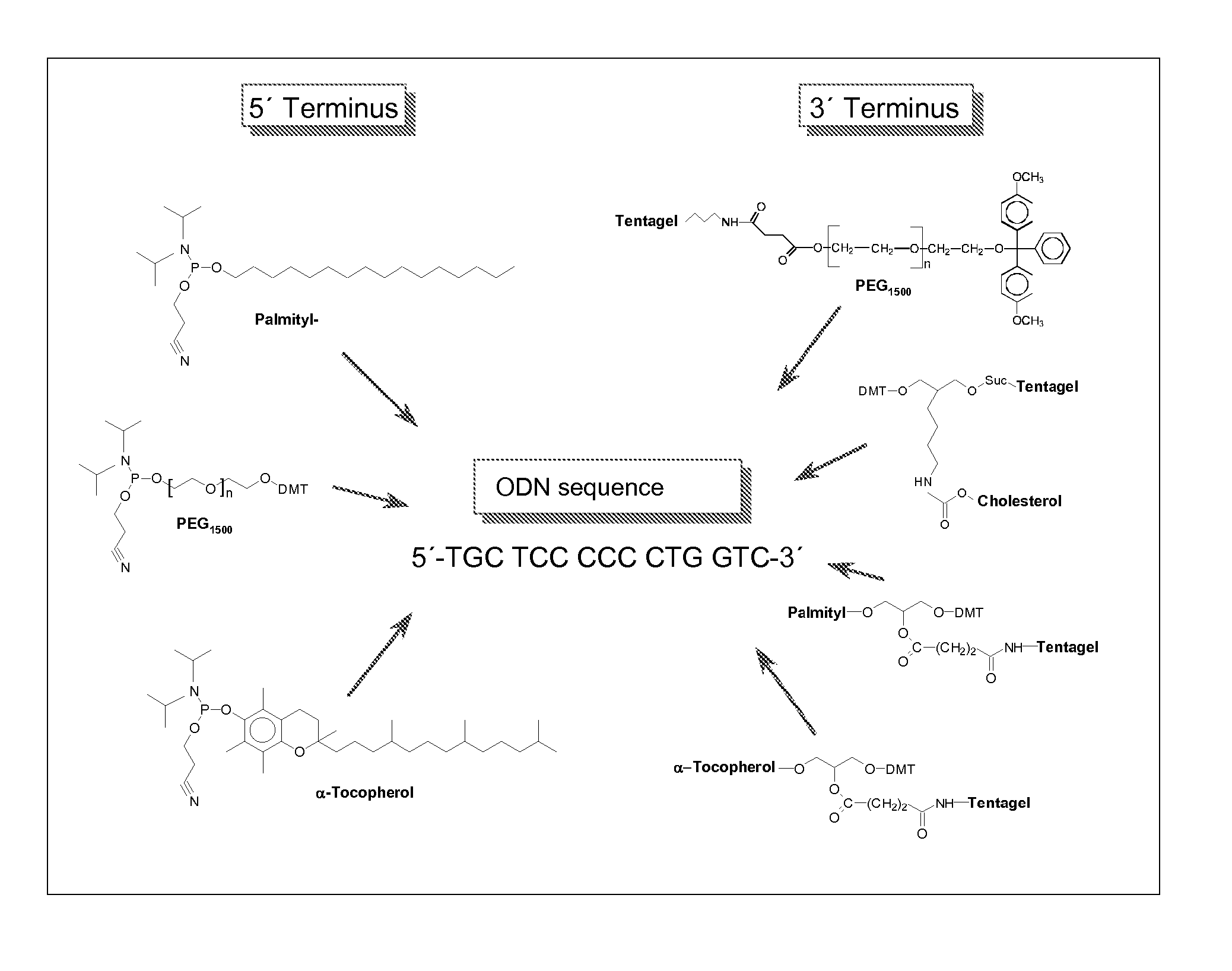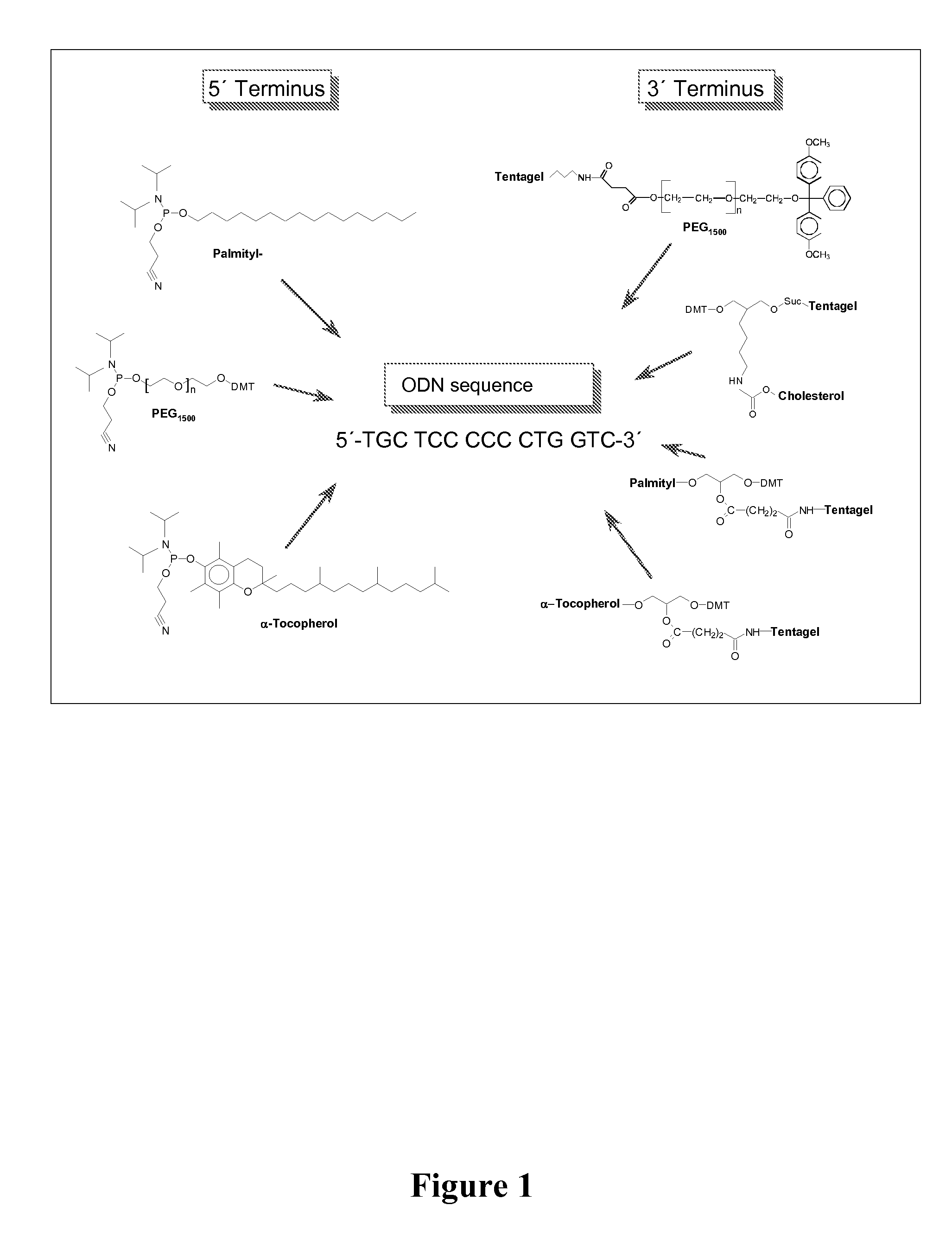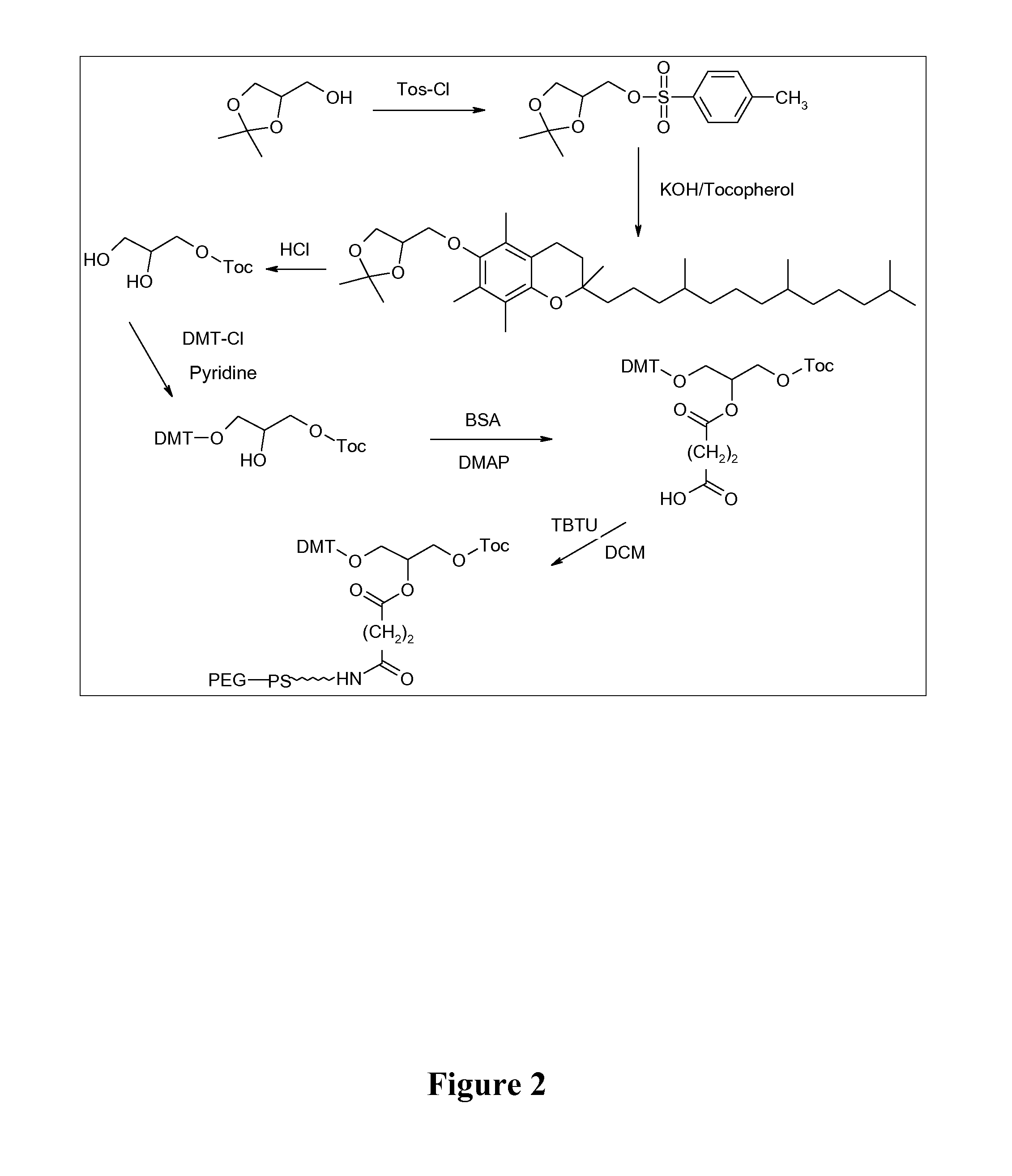Adjuvant in the form of a lipid-modified nucleic acid
a nucleic acid and adjuvant technology, applied in the direction of biocide, sugar derivatives, plant growth regulators, etc., can solve the problems of toxic side effects, in particular tissue necrose, and adjuvants in most cases producing undesirable side effects,
- Summary
- Abstract
- Description
- Claims
- Application Information
AI Technical Summary
Problems solved by technology
Method used
Image
Examples
example 1
Synthesis of 1-(4,4′-dimethoxytrityl)-polyethylene glycol (DMT-PEG1500)
[0097]
[0098] Procedure: 21 g of PEG1500 (14 mmol) are dissolved twice, for drying, in 30 ml of absolute pyridine each time, which is subsequently distilled off azeotropically. The dried starting material is dissolved in 35 ml of absolute pyridine. 4.7 g of 4,4′-dimethoxytrityl chloride (13.9 mmol) dissolved in 35 ml of absolute pyridine are added dropwise to this solution over a period of 30 minutes. Stirring is carried out for a further 2 hours at RT, during which the progress of the reaction is monitored by means of TLC. In addition to detection of the DMT group by means of a UV lamp, the TLC plates can be developed in two steps: 1. in an HCl-saturated atmosphere for the detection of DMT; 2. in an iodine chamber for the detection of PEG; PEG can additionally be detected with Dragendorff-Bürger spray reagent. When the reaction is complete, the solvent is removed and the product is taken up in 50 ml of DCM. The ...
example 2
Synthesis of 1-(4,4′-dimethoxytrityl)-hexaethylene glycol (DMT-HEG)
[0101] Procedure: 10 g of hexaethylene glycol (35 mmol) are dried by coevaporation with 2×30 ml of absolute pyridine and then dissolved in 20 ml of absolute pyridine. Analogously to the procedure of Example 1, the HEG is reacted with 10 g of DMT-Cl (29.5 mmol) dissolved in 50 ml of absolute pyridine. Purification by column chromatography is carried out with ethyl acetate / TEA=95:5. A viscous, yellow oil is obtained as the dried product.
[0102] Yield: 12.5 g (60.5% of theory)
[0103] TLC (DCM / MeOH=95:5): Rf value t=0.59
[0104] MS (FD): m / z 583.9 (M+)
[0105]1H-NMR (CDCl3): δ 3.21 (t, DMT-O—CH2—), 3.47-3.68 (m, —CH2—), 3.76 (s, —CH3), 6.77-7.46 (m, aromatic compound)
example 3
Synthesis of 1-(4,4′-dimethoxytrityl)-polyethylene glycol succinate (DMT-PEG-Suc)
[0106]
[0107] The procedure below can be used for both DMT-PEG1500 and DMT-HEG.
[0108] Procedure: 5 g of DMT-PEG1500 (2.8 mmol) are dissolved in 25 ml of DCM / pyridine=5:1, and 420 mg of succinic anhydride (4.2 mmol, i.e. 1.5 eq.) dissolved in 7 ml of pyridine, and 170 mg of DMAP (1.4 mmol, i.e. 0.5 eq.) dissolved in 3 ml of pyridine are added thereto. After 12 hours' stirring at RT, the solvents are removed in vacuo and the residue is taken up in DCM. The organic phase is washed thoroughly three times with NaHCO3 solution (10% in H2O) and twice with saturated aqueous NaCl solution, in order to separate off the excess succinic acid. After drying over Na2SO4, the solvent is removed. After thorough drying under a high vacuum, the succinates can be used without further working up for coupling to amino-modified carrier materials.
[0109] TLC: DMT-PEG1500-Suc (DCM / MeOH / TEA=18:2:0.5): Rf value=0.41
[0110] DMT-H...
PUM
| Property | Measurement | Unit |
|---|---|---|
| length | aaaaa | aaaaa |
| pharmaceutical composition | aaaaa | aaaaa |
| swelling | aaaaa | aaaaa |
Abstract
Description
Claims
Application Information
 Login to View More
Login to View More - R&D
- Intellectual Property
- Life Sciences
- Materials
- Tech Scout
- Unparalleled Data Quality
- Higher Quality Content
- 60% Fewer Hallucinations
Browse by: Latest US Patents, China's latest patents, Technical Efficacy Thesaurus, Application Domain, Technology Topic, Popular Technical Reports.
© 2025 PatSnap. All rights reserved.Legal|Privacy policy|Modern Slavery Act Transparency Statement|Sitemap|About US| Contact US: help@patsnap.com



